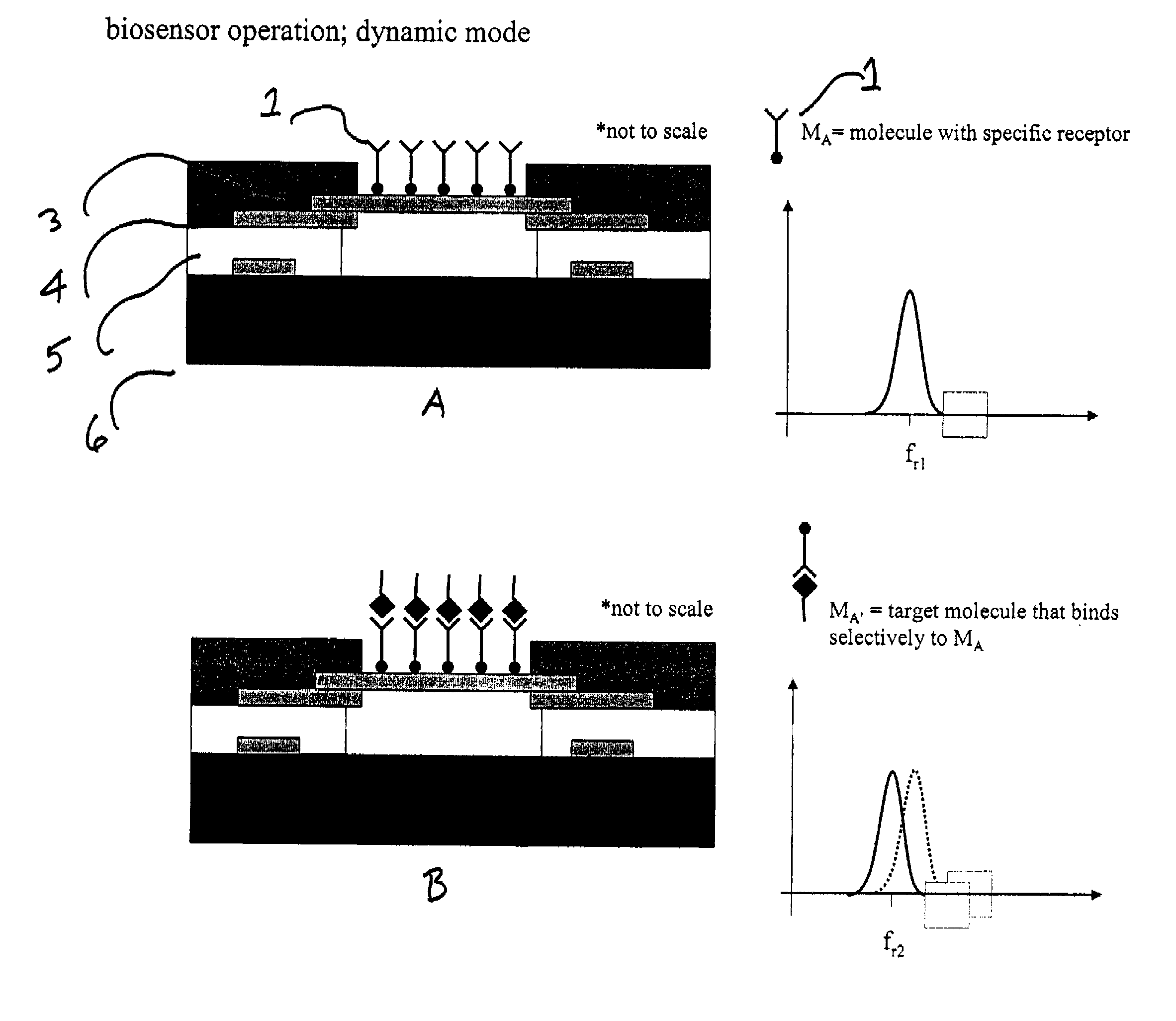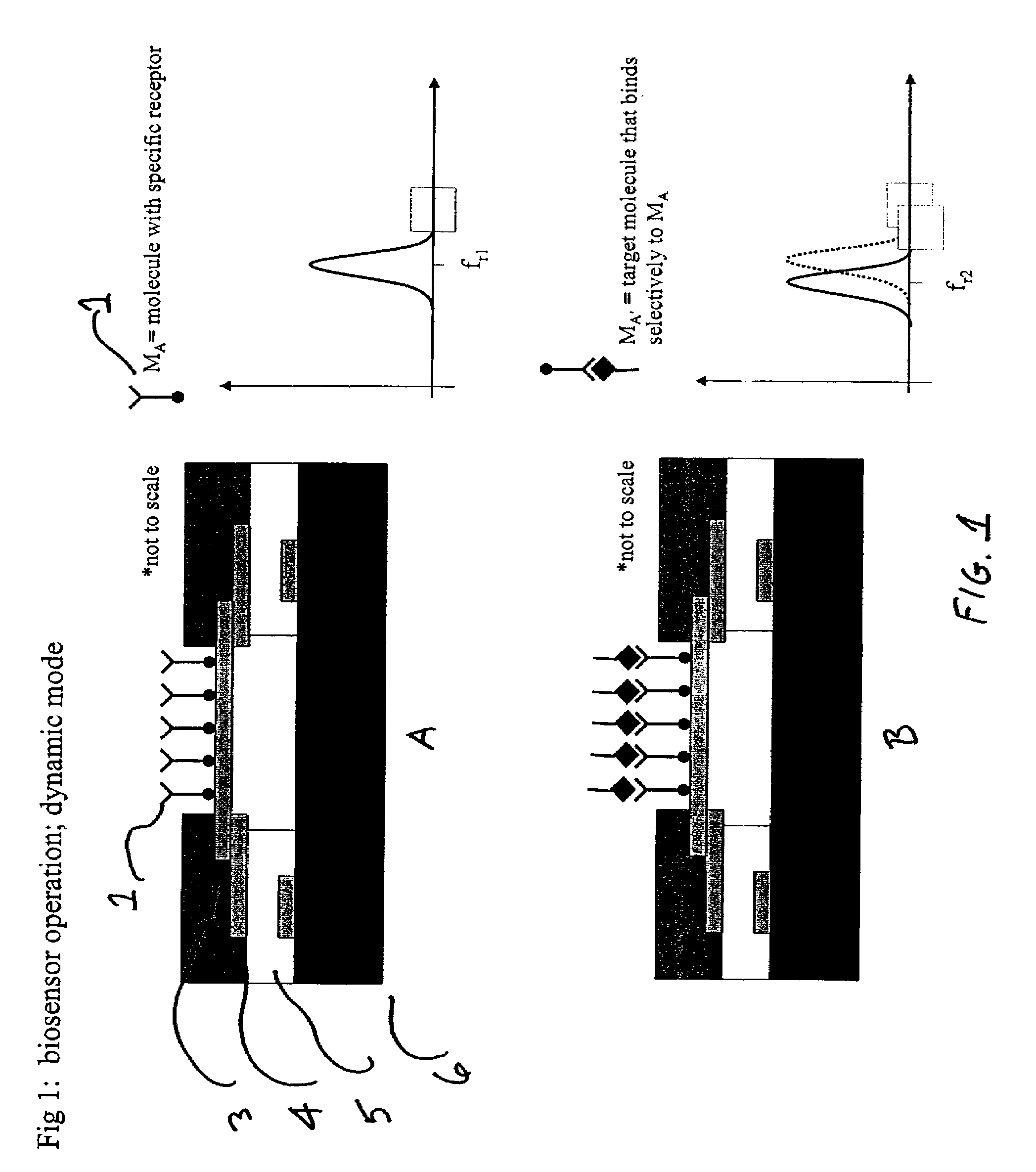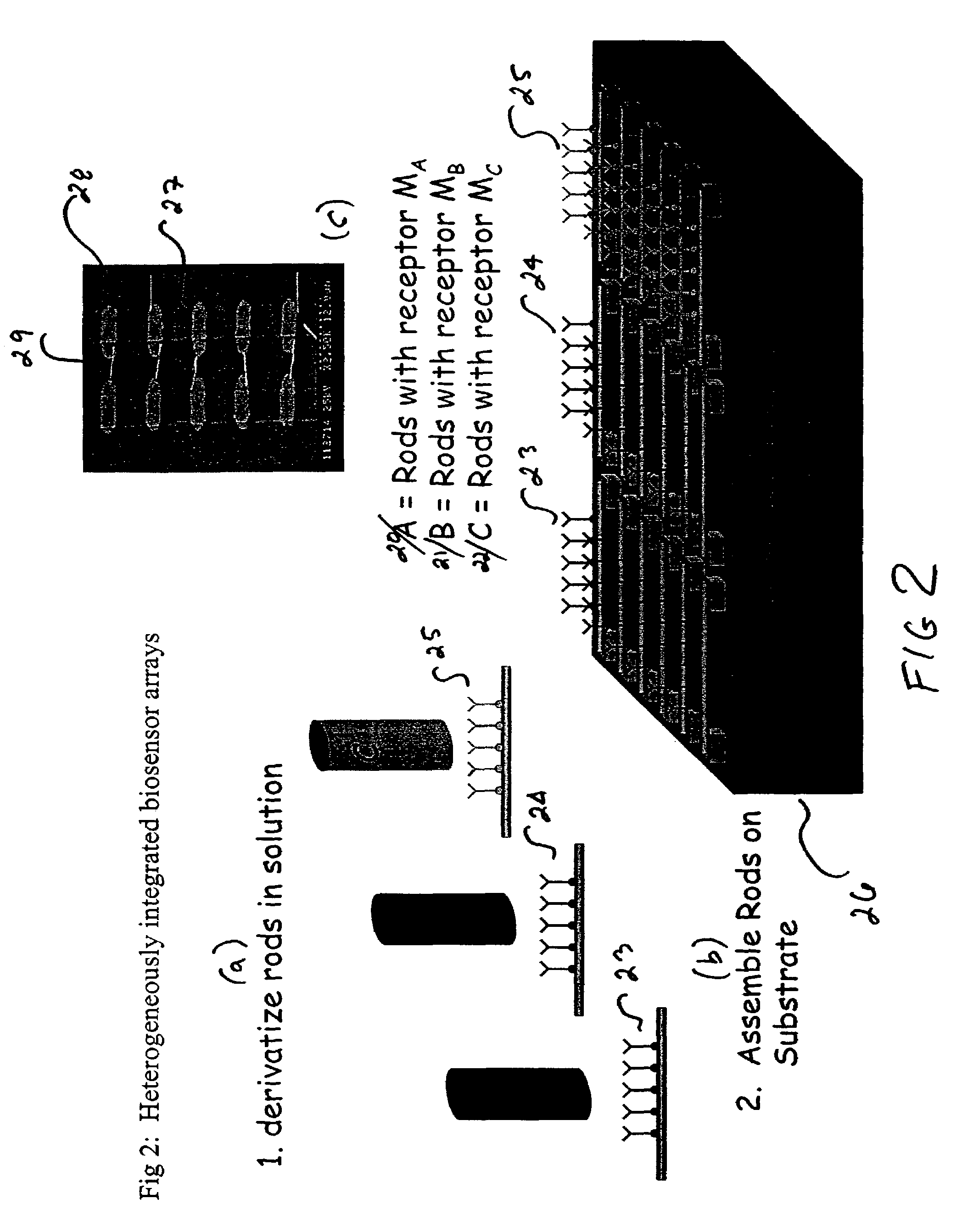Integrated nanomechanical sensor array chips
a sensor array and nanomechanical technology, applied in the field of heterogeneous integration of sensor arrays, can solve the problems of unacceptably high non-specific binding of snps, limited utility in certain applications, and commercial maturation
- Summary
- Abstract
- Description
- Claims
- Application Information
AI Technical Summary
Benefits of technology
Problems solved by technology
Method used
Image
Examples
example
Nanorod Integration Process
[0063]Several nanorod integration schemes are possible. Here, we will provide a process flow for one scheme that can be used for molecule assembly onto the rods prior to their integration. This process flow is outlined in FIG. 1. There are many other schemes that could be envisioned for those who are skilled in the art of process integration. These involve assembling the rods prior to molecule integration and assembling the molecule using orthogonal assembly onto different metal rods OR through electric-field enhanced assembly of the molecules.
[0064]Step 1-Rod Synthesis: Using the template replication approach described previously, we synthesize rods and suspend them in a solvent that is compatible with molecule assembly.
[0065]Step 2-Receptor Molecule Assembly: In this example, we have three vials of rods with different receptor molecules MA, MB, and MC in each vial. Using template replication techniques, we synthesize and functionalize >1011 rods simultan...
PUM
| Property | Measurement | Unit |
|---|---|---|
| diameter | aaaaa | aaaaa |
| length | aaaaa | aaaaa |
| size | aaaaa | aaaaa |
Abstract
Description
Claims
Application Information
 Login to View More
Login to View More - R&D
- Intellectual Property
- Life Sciences
- Materials
- Tech Scout
- Unparalleled Data Quality
- Higher Quality Content
- 60% Fewer Hallucinations
Browse by: Latest US Patents, China's latest patents, Technical Efficacy Thesaurus, Application Domain, Technology Topic, Popular Technical Reports.
© 2025 PatSnap. All rights reserved.Legal|Privacy policy|Modern Slavery Act Transparency Statement|Sitemap|About US| Contact US: help@patsnap.com



